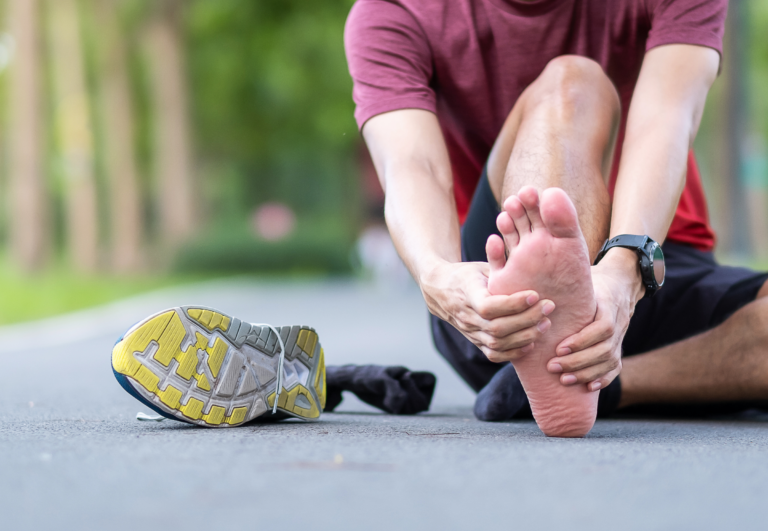Importance of a Warm-Up and Cool-Down in Trail Running: Essential Practices for Peak Performance
Trail running demands more than just endurance and agility—it also requires effective preparation and recovery to enhance performance and prevent injuries. As a UESCA certified running coach and seasoned trail runner, I prioritize warm-up routines to prepare the body for the varied and unpredictable terrain of the trails. A proper warm-up increases your heart rate, warms your muscles, and primes your nervous system for the activity ahead, which is crucial for tackling challenging inclines and uneven ground.
Cooling down after a run is equally vital. It allows your body to gradually transition back to its resting state, reduces the risk of muscle stiffness, and initiates the recovery process. Effective cool-down techniques, such as stretching and light jogging or walking, aid in clearing out lactic acid build-up from the muscles, which can help mitigate post-run soreness and tighten joints and muscles.

The Best Warm-Up Routine for Trail Running
Before hitting the trails, a proper warm-up routine is essential to prepare the body for the dynamic challenges of trail running. The following guidelines and exercises specifically target trail runners’ needs for an effective warm-up to enhance performance and reduce the risk of injury.
General Guidelines for Warming Up
I always advise starting with a light 5-10 minute walk to gently raise the heart rate and get blood flowing to the muscles. It’s important to focus on dynamic movements rather than static stretching, as this better simulates the activity to come. A thorough warm-up should last about 10-15 minutes and end just before you begin your run, to avoid cooling down too much.
Warm-Up Exercises for Trail Runners
| Exercise | Duration | Description |
|---|---|---|
| Walking | 5-10 minutes | Start with an easy pace to gently increase your heart rate. |
| Jogging | 3 minutes | Gradually increase to a slow jog to continue building momentum. |
| Leg swings | 1 minute | Perform forward and side leg swings to enhance hip mobility. |
| Butt kicks | 30 seconds | While jogging in place, kick heels up towards your glutes. |
| High knees | 30 seconds | Lift knees high while jogging in place to activate the hip flexors. |
| Running warmup | 2 minutes | Transition to a brisk jog to closely mimic trail running. |
Include these exercises sequentially to slowly ramp up your body’s readiness for trail running. By incorporating walking, jogging, leg swings, butt kicks, and high knees, you’ll deliver oxygen-rich blood to your muscles, ensuring they’re pliable and ready to tackle uneven terrain. Remember, the aim is to become alert and agile, not exhausted, so keep the intensity moderate.
Why Warm-Ups Are Important for Trail Running
Warming up is essential to prepare your body for the rigors of trail running, enhancing your performance and reducing the risk of injury. It elevates heart rate, body temperature, and blood flow, ensuring muscles and joints are ready for action.
The Science of Heating Up
As a UESCA certified running coach, I understand that a gradual warm-up increases heart rate, facilitating blood flow to the muscles and raising body temperature. This process primes the nervous system, contributing to muscle efficiency and a broader range of motion in the joints, crucial for tackling uneven terrain.
Key Components of an Effective Warm-Up
An effective warm-up comprises:
Light Aerobic Activity: This gently raises your heart rate. Examples include:
- Brisk walking
- Light jogging
Dynamic Stretching: To enhance flexibility and range of motion. Some dynamic stretches are:
- Leg swings
- Arm circles
Running Drills: They further activate your muscles and joints. Key drills include:
- High knees
- Butt kicks
Dynamic Stretching Explained
I advise including dynamic stretches in your warm-up to prepare the joints for movement and muscles for exertion. These are controlled movements that improve range of motion and get your body accustomed to the types of motion you will perform while running. They activate the nervous system, which helps improve muscle function and coordination.
Transitioning from Warm-Up to Running
As a UESCA certified running coach with extensive trail running experience, I emphasize a smooth transition from warm-up to running to ensure the workout boosts both temperature and endurance without strain.
Integrating Warm-Up into Trail Runs
Start Slow: Begin with a walk or very gentle jog for about three to five minutes. This phase is crucial for inviting gradual blood flow and mentally preparing for the shift to a run.
- Dynamic Warm-Up: Proceed with dynamic stretches such as knee lifts and lunges to enhance flexibility and balance.
- Build-Up: Gradually increase the pace every minute, shifting from a walk to a steady, easy run, also known as ‘easy miles.’
Key Aspect: The transition should feel natural. Avoid jumping from static to high-intensity activity abruptly to manage muscle temperature and readiness effectively.
Finding the Right Intensity
Endurance Focus: If your goal is to build endurance, maintain a slower pace that allows for prolonged activity without leading to early fatigue.
- Pace Increments: Increase your running speed in small increments after the initial warm-up until you reach your desired training intensity.
Balance Effort: Pay close attention to your body’s signals. The transition should not be strenuous but should prepare you for the conditions ahead, particularly on uneven trail surfaces.
Listen and Adjust: Allow the body’s response to guide the intensity. If the muscles feel tight or the breath is short, this might signal the need to reduce pace.
By adhering to these steps, your transition from warm-up to running will help prepare your body for the trail run, align with your workout goals, and enhance your running experience.
Cool-Down Fundamentals
Cooling down after a trail run is as vital as the run itself. It helps bring the body back to its resting state slowly, avoiding muscle soreness and promoting recovery.
Biological Rationale for Cooling Down
After intense activity, my body needs to transition to a state of rest. Cooling down is fundamental because it allows my heart rate and respiratory system to gradually decrease, minimizing the chances of dizziness or fainting caused by blood pooling in the lower extremities.
Proper cooldown also facilitates the removal of lactic acid, which can build up during vigorous activity, potentially leading to muscle stiffness. Slow, deliberate movements during a cool-down phase aid in reducing muscle tension and promote oxygen distribution to recover muscle tissue.
Essential Cool-Down Exercises
A structured cool-down routine ensures that I accommodate all necessary aspects of muscle recovery. Here’s a simple structure I follow:
- Gentle jogging or walking for 5-10 minutes to gradually bring down my heart rate.
- Static stretching for 5-10 minutes, focusing on major muscle groups
used in running, to improve flexibility and lower the risk of injury.
I concentrate on stretches such as:
- Hamstrings: Keeping my legs straight and reaching for my toes.
- Quadriceps: Pulling one foot back towards my buttocks and holding.
- Calves: Pushing against a wall with one leg straight and one bent.
Each stretch is held for about 15-30 seconds to gently lengthen the muscles and aid in recovery. It’s important not to rush and to breathe deeply, allowing my blood vessels to constrict back to normal and my muscle soreness to decrease. This process is crucial for my well-being and my preparedness for my next run.
Injury Prevention and Recovery

As an experienced UESCA certified running coach, I understand that effectively incorporating a warm-up and cool-down into your trail running routine plays a crucial role in both preventing injuries and aiding in your post-run recovery process.
Reducing the Risk of Injuries
Before hitting the trails, I recommend initiating with dynamic warm-ups rather than static stretches to prepare the muscles, tendons, and joints for the terrain ahead.
This includes exercises like leg swings and lunges which increase blood flow and elevate muscle temperature, making them more pliable and less prone to tears. A warm-up should last about 5-10 minutes, gradually increasing in intensity.
Key Warm-Up Exercises:
- Leg swings: start with 10 per leg, both side-to-side and forward-and-back movements.
- Lunges: perform 10 lunges on each leg, focusing on controlled movements.
Enhancing Recovery Post-Run
Immediately following a trail run, initiate a cool-down phase with 5-10 minutes of easy jogging or walking. This helps in the gradual reduction of heart rate and begins the process of recovery.
After this, static stretches and foam rolling can prevent cramping and address areas of tension, which can alleviate the effects of delayed onset muscle soreness (DOMS). Pay attention to calves, hamstrings, and quadriceps during this cool-down stage.
Effective Recovery Techniques:
- Static stretches: Hold each stretch for 15-30 seconds, ensuring you feel a gentle pull, not pain.
- Foam rolling: Spend 1-2 minutes rolling each major muscle group to aid in muscle recovery.
Incorporating these practices will help mitigate the chances of injury and enhance recovery, so you can return to the trails with resilience and strength.
Measuring Effectiveness

Evaluating the effectiveness of warm-ups and cool-downs involves both qualitative and quantitative assessments. My experience shows that tracking specific metrics and listening to your body are equally important in gauging how well your routine is working.
Tracking Improvement in Performance
To quantitatively measure the effectiveness of a warm-up or cool-down, I recommend recording performance data. This can include times, distances, or even subjective effort levels during trail runs. A simple yet effective way to organize this data is using a table:
| Date | Warm-Up Duration | Trail Run Time | Perceived Effort |
|---|---|---|---|
| 02/28 | 10 minutes | 45 minutes | Moderate |
| 03/01 | 15 minutes | 44 minutes | Moderate |
| 03/02 | 20 minutes | 43 minutes | Low |
Over time, you might notice a decrease in effort for the same run time or distance, which indicates an improvement in performance resulting from an effective warm-up and cool-down routine.
Listening to Your Body
Qualitative measures include self-assessment. After a proper warm-up, you should feel energized, not exhausted, indicating your body is ready for the hard effort ahead. Cool-downs should leave you feeling that your heart rate and blood pressure have returned to a resting state after the low-intensity activity.
It’s important to be aware of how you feel during and after your runs to ensure your warm-up and cool-down routines are supporting your performance and recovery. If you consistently feel fatigued or excessively sore, tweaks to your routine may be necessary.






